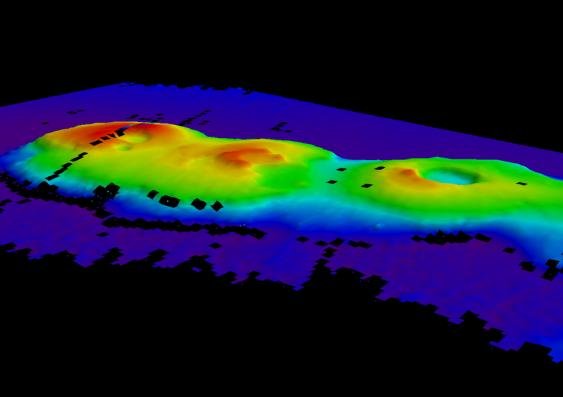1 of 2 | A lobser larva. Photo by UNSW/Marine National Facility
SYDNEY, July 13 (UPI) -- A team of Australian scientists and students aboard a ocean research vessel called Investigator have discovered a series of extinct underwater volcanoes they believe to be more than 50 million years old.
The ancient volcanoes are located 155 miles off the coast of Sydney, Australia. The newly discovered volcanic cluster lies more than three miles beneath the ocean's surface, with the largest of the four calderas rising more than 2,000 feet off the ocean floor and boasting a rim nearly a mile wide.
"They tell us part of the story of how New Zealand and Australia separated around 40-80 million years ago and they'll now help scientists target future exploration of the sea floor to unlock the secrets of the Earth's crust," Richard Arculus, a professor at the Australian National University and one of the world's leading volcano experts, said of the volcanoes.
"They haven't been found before now because the sonar on the previous Marine National Facility (MNF) research vessel, Southern Surveyor, could only map the sea floor to 3,000 meters, which left half of Australia's ocean territory out of reach," Arculus explained.
The expedition responsible for the discovery is led by a team of scientists from the University of New South Wales (UNSW). Investigator is outfitted with sonar that works at any depth, and a variety of other exploratory technologies. The operation is also buoyed by a communication system that enables ongoing collaboration between scientists on the ship and a team of researchers back on land.
In addition to extinct volcanoes, the researchers also located an offshore eddy that serves as hotspot for lobster larvae and also supports juvenile commercial fish species.
"It was astounding to find juvenile commercial fish species like bream and tailor 150 kilometers [93 miles] offshore, as we had thought that once they were swept out to sea that was end of them," said chief scientist for the voyage, UNSW marine biologist Professor Iain Suthers. "But in fact these eddies are nursery grounds along the east coast of Australia."















